Discover the essentials of backpacking gear and equip yourself for your first adventure with confidence. Beginners backpacking list have everything you need.
Having a checklist is crucial to ensure you have everything you need for a successful trip. From ID and paper maps to a reliable navigation system, we’ve got you covered.
Contents
Get ready to explore the great outdoors with peace of mind knowing that you have all the necessary gear in your backpack.
Don’t miss out on this comprehensive guide that will set you up for an unforgettable backpacking experience.

Beginners Backpacking List
To ensure a successful backpacking trip, it’s crucial to have all the necessary equipment.
This comprehensive list will guide beginners in packing the essential gear for their adventure.
Essential Gear for Beginners
When preparing for a backpacking trip, there are several important items that should not be overlooked:
- Backpack: Choose a lightweight backpack that fits comfortably and has enough capacity to carry your gear.
- Tent: Invest in a reliable tent that is lightweight and easy to set up.
- Sleeping Bag: Opt for a sleeping bag suitable for the expected weather conditions, ensuring warmth and comfort during nights.
- Cooking Equipment: Pack a compact stove, fuel canister, cookware, and utensils for preparing meals on the trail.
- Water Filtration System: Carry a water filter or purification tablets to ensure access to clean drinking water.
- Navigation Tools: Bring a map, compass, or GPS device to navigate unfamiliar trails confidently.
- First Aid Kit: Be prepared for any injuries or emergencies with a well-stocked first aid kit.
- Clothing Layers: Pack appropriate clothing layers including base layers, insulation layers, rain gear, and extra socks.
- Food and Snacks: Plan and pack lightweight meals and snacks that provide sufficient energy during the trip.
Best backpacking back packs
Must-Have Supplies
In addition to the essential gear mentioned above, there are some must-have supplies that beginners should consider:
- Headlamp or flashlight
- Multi-tool or pocket knife
- Extra batteries
- Sun protection (hat, sunglasses, sunscreen)
- Insect repellent
- Trekking poles (optional but helpful)
- Camping pillow (for added comfort)
Remember that each backpacker’s needs may vary based on personal preferences and the specific trip requirements.
By following this comprehensive beginners backpacking list.
You can ensure that you have all the necessary gear and supplies to embark on your adventure with confidence. Happy backpacking!
Download Backpacking Packing List Free

Choosing the Right Hiking Shoes or Boots
Choosing the right footwear is crucial for a comfortable and enjoyable experience. Let’s dive into some key points to consider when selecting hiking shoes or boots.
Understand the Importance
Understanding how crucial it is to select appropriate footwear for hiking trips is essential.
Ill-fitting or improper shoes can lead to discomfort, blisters, and foot pain, which can quickly ruin your outdoor adventure.
Types of Hiking Shoes and Boots
There are different types of hiking shoes and boots available in the market. Here are some options to consider:
- Hiking Shoes: Lightweight and flexible, suitable for day hikes on well-maintained trails.
- Hiking Boots: Sturdier and more supportive, ideal for longer hikes on rugged terrains.
- Sandals: A good option for short hikes in hot weather or water crossings.
Finding the Perfect Fit
To ensure comfort and support during long hikes, finding the perfect fit is essential. Consider these tips:
- Measure your feet accurately before buying.
- Try on different brands and models to find the best fit.
- Wear proper hiking socks when trying on shoes or boots.
Avoid Blisters and Foot Pain
Choosing the right pair of shoes or boots can help you avoid blisters and foot pain. Here are some factors to keep in mind:
- Look for durable materials that provide breathability.
- Ensure sufficient cushioning and arch support.
- Pay attention to traction for better grip on various terrains.
Remember, what works for one person may not work for another. It’s important to try out different options until you find what suits you best.
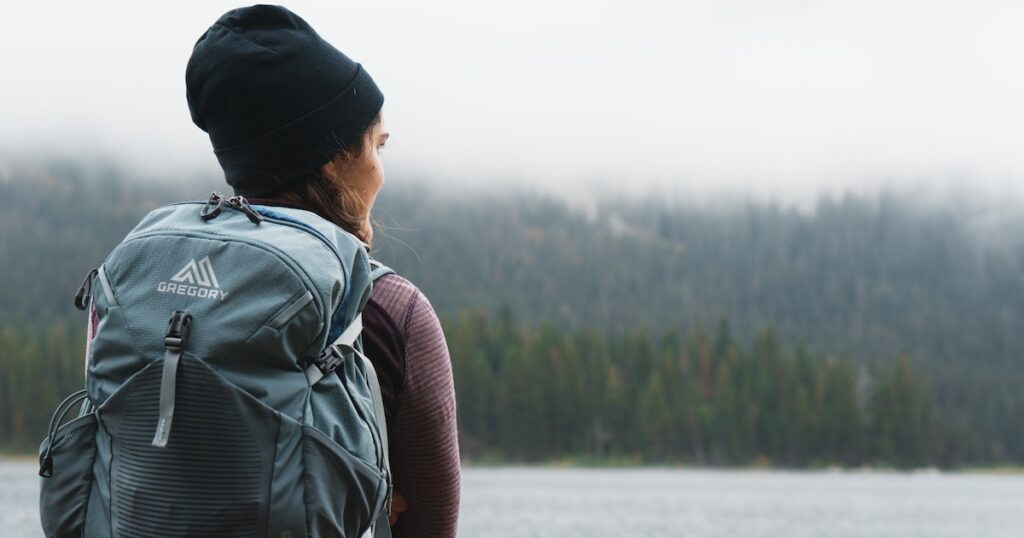
Selecting Appropriate Clothing for Backpacking Adventures
To have a successful backpacking trip, it’s crucial to dress appropriately for the great outdoors.
Here are some tips on selecting the right clothing for your backpacking adventures:
Consider Weather Conditions
Before embarking on a backpacking trip, take a moment to check the weather forecast. This will help you determine what kind of clothing you’ll need to pack.
If it’s going to be hot and sunny, opt for lightweight and breathable clothing that provides sun protection, such as long-sleeve shirts and wide-brimmed hats.
On the other hand, if rain is in the forecast, make sure to bring waterproof jackets and pants to stay dry.
Layer Up Effectively
Weather conditions can change quickly when you’re out on the trail, so it’s important to layer up effectively.
Start with a moisture-wicking base layer that helps keep sweat away from your body.
Over that, add insulating layers like fleece or down jackets to trap heat in colder temperatures.
Finally, top it off with a waterproof outer layer to protect against wind and rain.
Choose Lightweight Fabrics
When selecting clothing items for your backpacking trip, prioritize lightweight fabrics that dry quickly while hiking.
Look for materials like nylon or polyester blends that are known for their moisture-wicking properties.
These fabrics will help keep you comfortable by drawing sweat away from your skin and drying rapidly.
Don’t Forget About Accessories
In addition to clothing essentials like shirts, pants, and jackets, don’t forget about accessories that can enhance your outdoor experience.
Sunglasses are essential for protecting your eyes from harmful UV rays and glare while hiking under bright sunshine.
Consider investing in quick-drying underwear and socks made specifically for outdoor activities.
Remember: comfort is key. By dressing appropriately and being prepared for changing weather conditions, you’ll be able to fully enjoy your outdoor adventure.
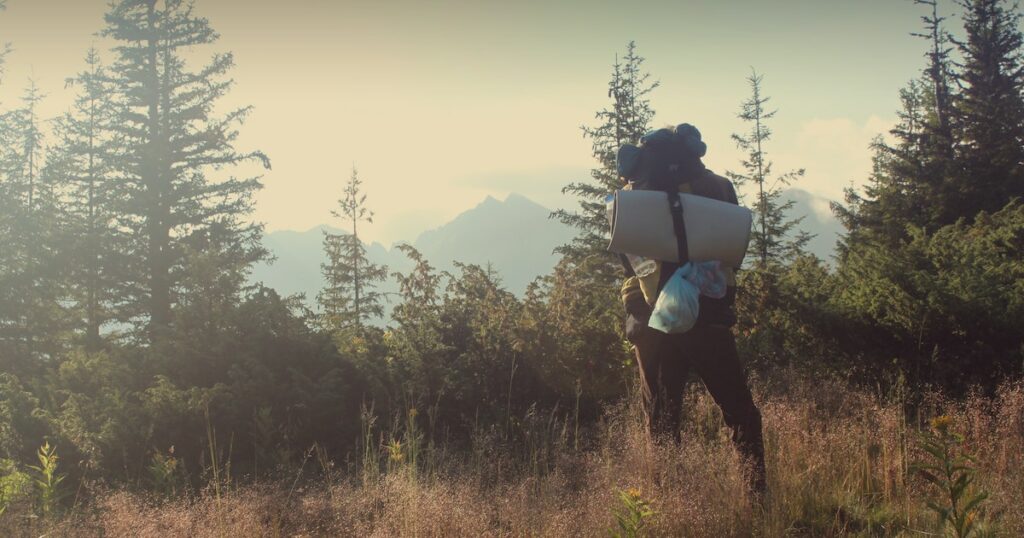
Must-Have Backpacking Gear and Kitchen Essentials
Having the right gear and kitchen essentials is crucial for a successful adventure.
Let’s explore some essential items you’ll need for cooking meals while backpacking and discover lightweight options that are easy to carry in your pack.
Essential Backpacking Gear
- Backpacking Pack: Invest in a sturdy backpack specifically designed for backpacking trips. Look for one with adjustable straps and multiple compartments to distribute weight evenly.
- Backpacking Stove: A compact and lightweight backpacking stove is essential for cooking meals on the trail. Opt for a stove that uses fuel efficiently and has a stable base.
- Cookware: Choose lightweight cookware made from materials like titanium or aluminum to save space in your pack. Look for pots and pans with foldable handles for easy storage.
- Utensils: Pack multi-purpose utensils such as a spork (combination of spoon and fork) or a camping utensil set that includes a knife, spoon, and fork.
Kitchen Essentials
- Cutting Tools: Carry a small folding knife or multi-tool with a sharp blade to prepare food while camping. It can also come in handy for other tasks like opening packages or repairing gear.
- Food Storage Containers: Use resealable bags or lightweight containers to store food items securely without adding unnecessary weight to your pack.
- Water Filtration System: Ensure access to clean drinking water by carrying a portable water filter or purification tablets. This will allow you to refill your water bottles from natural sources along the trail.
- Lightweight Dishes: Opt for collapsible bowls, plates, and cups made from durable but lightweight materials such as silicone or plastic.
By packing these essential gear items and kitchen tools, you’ll be well-prepared to cook delicious meals while enjoying the great outdoors.
Remember to consider the weight and space-saving features of each item to ensure a comfortable backpacking experience.
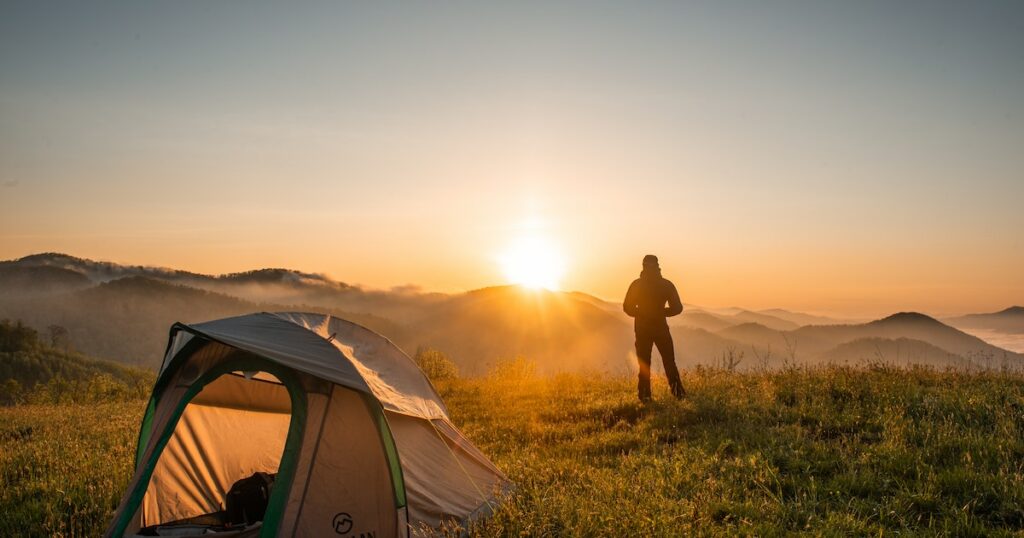
Deciding Between Hiking Pants or Shorts
Deciding between hiking pants or shorts is an important consideration.
By taking into account the weather conditions and personal preference, you can make an informed decision that will enhance your comfort and mobility on the trail.
Weather Conditions and Protection
Hiking pants offer better protection against bugs, sunburn, and scratches from vegetation on trails.
They provide coverage for your legs, shielding them from potential hazards you may encounter while hiking.
On the other hand, shorts are ideal for warmer weather conditions when you want to stay cool and enjoy the breeze.
Versatility, Durability, and Breathability
Consider whether versatility, durability, or breathability is more important for your backpacking adventure.
Hiking pants are versatile as they can be worn in various weather conditions by layering appropriately.
They also tend to be more durable than shorts due to their thicker fabric construction.
However, if breathability is a priority for you in hot climates or during intense physical activity, then shorts may be the better option.
Personal Preference
Ultimately, personal preference plays a significant role in deciding between hiking pants or shorts.
Some hikers prefer the freedom of movement that shorts provide while others prioritize the added protection and versatility of hiking pants.
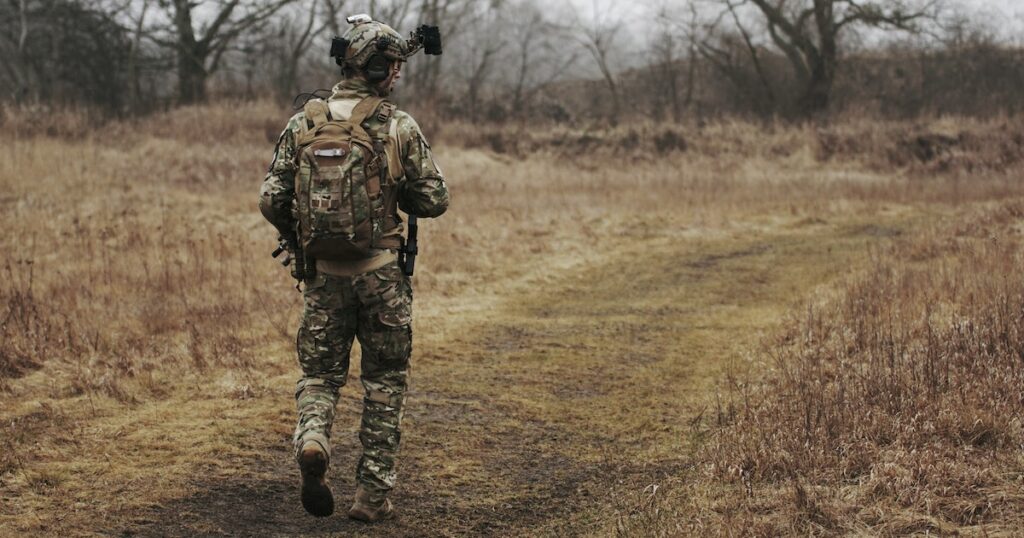
Essential Sleeping Bag for Comfortable Nights on the Trail
Selecting the right sleeping bag is crucial for a comfortable night’s sleep during your backpacking adventure.
To ensure warmth and coziness, consider the following factors when choosing your sleeping bag:
Temperature Ratings
Check the temperature ratings of different sleeping bags to determine their suitability in various weather conditions.
A lower temperature rating means better insulation and warmth in colder temperatures.
Be sure to choose a sleeping bag that matches the expected weather conditions of your trip.
Down-Filled or Synthetic Sleeping Bags
Decide whether you prefer a down-filled or synthetic sleeping bag. Down-filled bags are lightweight, compressible, and provide excellent insulation.
However, they can be more expensive and lose their insulating properties when wet.
Synthetic bags, on the other hand, are more affordable, retain insulation even when damp, but tend to be bulkier.
Recommended Hiking Boots
Lightweight and Compact Design
Opt for a lightweight and compact sleeping bag that won’t weigh you down on the trail.
Look for models made with lightweight materials and efficient insulation technologies that minimize both weight and size without compromising comfort.
When it comes to packing your sleeping bag for transportation:
- Use a compression sack or stuff sack to reduce its size.
- Consider investing in a waterproof stuff sack to protect your sleeping bag from moisture.
- If space is limited in your backpack, attach your sleeping bag externally using straps or bungee cords.
Remember that getting a good night’s sleep is essential for an enjoyable backpacking experience.
By selecting an appropriate sleeping bag based on temperature ratings, insulation type, weight, and size considerations, you’ll be well-prepared for restful nights under the stars.
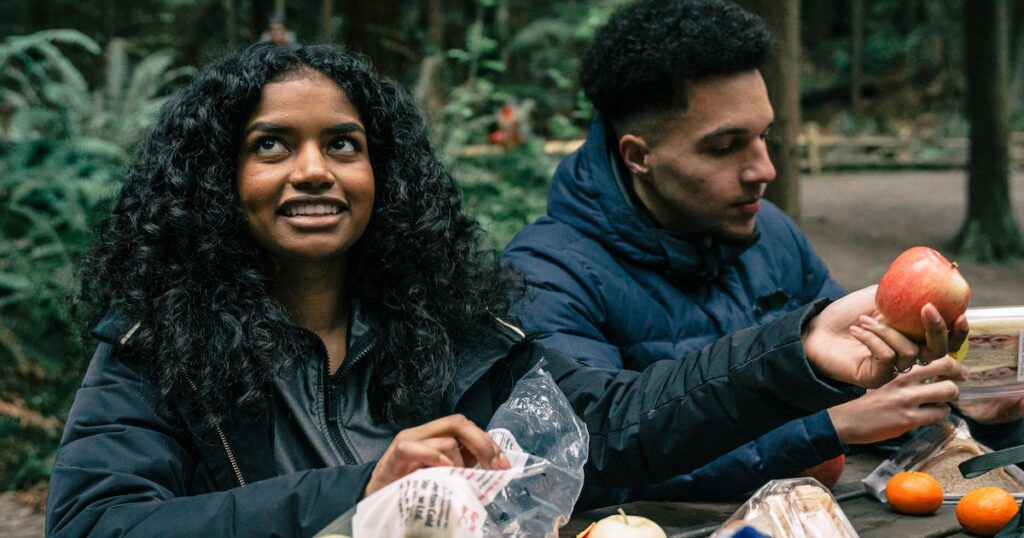
Your Comprehensive Beginners Backpacking List
Before embarking on your first backpacking adventure, it’s crucial to ensure you have all the necessary items to make your trip comfortable and safe.
Don’t worry, we’ve got you covered with this comprehensive beginners backpacking list.
Packing List: Be Prepared for Anything
- Backpack: A sturdy and properly fitting backpack is essential to carry all your gear.
- Tent: Choose a lightweight tent that offers protection from the elements.
- Sleeping Bag: Invest in a quality sleeping bag suitable for the expected weather conditions.
- Sleeping Pad: A comfortable sleeping pad provides insulation and cushioning.
- Cooking Gear: Lightweight cookware, stove, utensils, and food storage containers are essential for meal preparation.
- Water Filtration System: Ensure access to clean drinking water by packing a reliable water filtration system or purification tablets.
- Clothing Layers: Pack moisture-wicking base layers, insulating mid-layers, and waterproof outer layers to adapt to changing weather conditions.
- Hiking Boots or Shoes: Invest in proper footwear that offers support and traction on various terrains.
- Navigation Tools: Carry a map, compass, or GPS device to navigate through unfamiliar trails.
- First Aid Kit: Be prepared for minor injuries with a well-stocked first aid kit.
Others You Shouldn’t Overlook
- Headlamp or Flashlight
- Multi-tool or Swiss Army Knife
- Sun Protection (Sunscreen, Hat)
- Insect Repellent
- Personal Hygiene Items (Toothbrush, Toothpaste)
- Duct Tape (Useful for quick repairs)
By following this detailed beginners backpacking list, you can feel confident knowing that you’re well-prepared for your outdoor adventure.
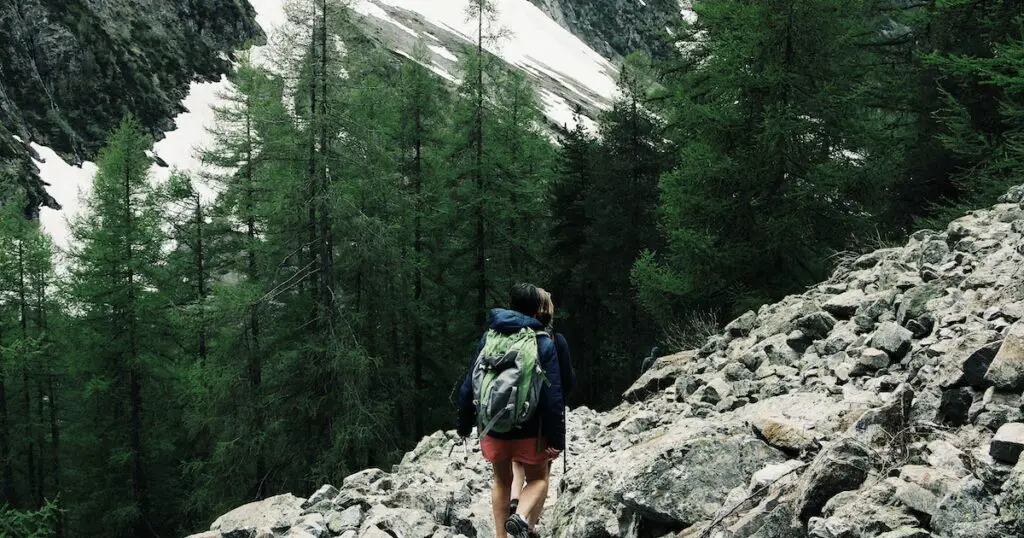
Conclusion
In conclusion, this comprehensive beginners backpacking list covers all the essential items you need to embark on your outdoor adventure.
From choosing the right hiking shoes or boots to selecting appropriate clothing and must-have gear, this guide has got you covered.
Remember to prioritize comfort, durability, and functionality when making your choices.
Now that you have a thorough understanding of what you need for your backpacking trip, it’s time to start planning and preparing.
Make sure to research the specific requirements of your destination and consider factors such as weather conditions and terrain.
Don’t forget to check out reputable outdoor retailers for high-quality gear that will last you through many adventures.
FAQs
1. How do I choose the right size backpack?
When choosing a backpack for your backpacking adventure, consider its capacity in liters. For shorter trips or ultralight packing, a smaller pack around 30-50 liters may be sufficient.
2. What type of sleeping pad should I bring?
Sleeping pads provide insulation and cushioning while sleeping outdoors. There are various types available including foam pads, self-inflating pads, and air mattresses.
3. Should I bring a water filter?
Bringing a water filter is highly recommended for backpacking trips as it allows you to safely drink water from natural sources such as streams or lakes without worrying about contaminants.
4. How many pairs of socks should I pack?
It is advisable to pack at least two pairs of socks for a backpacking trip. Opt for moisture-wicking and quick-drying materials to keep your feet comfortable and prevent blisters.
5. Can I use regular sneakers instead of hiking shoes?
While regular sneakers may be suitable for short hikes on well-maintained trails, investing in proper hiking shoes or boots is recommended for backpacking adventures.

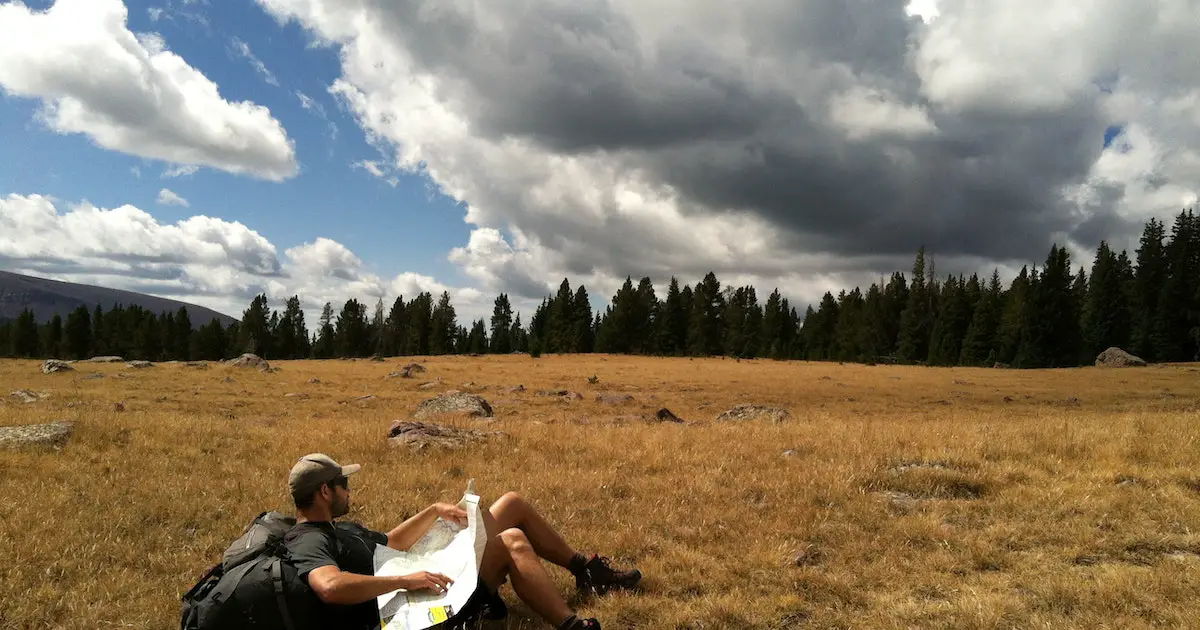







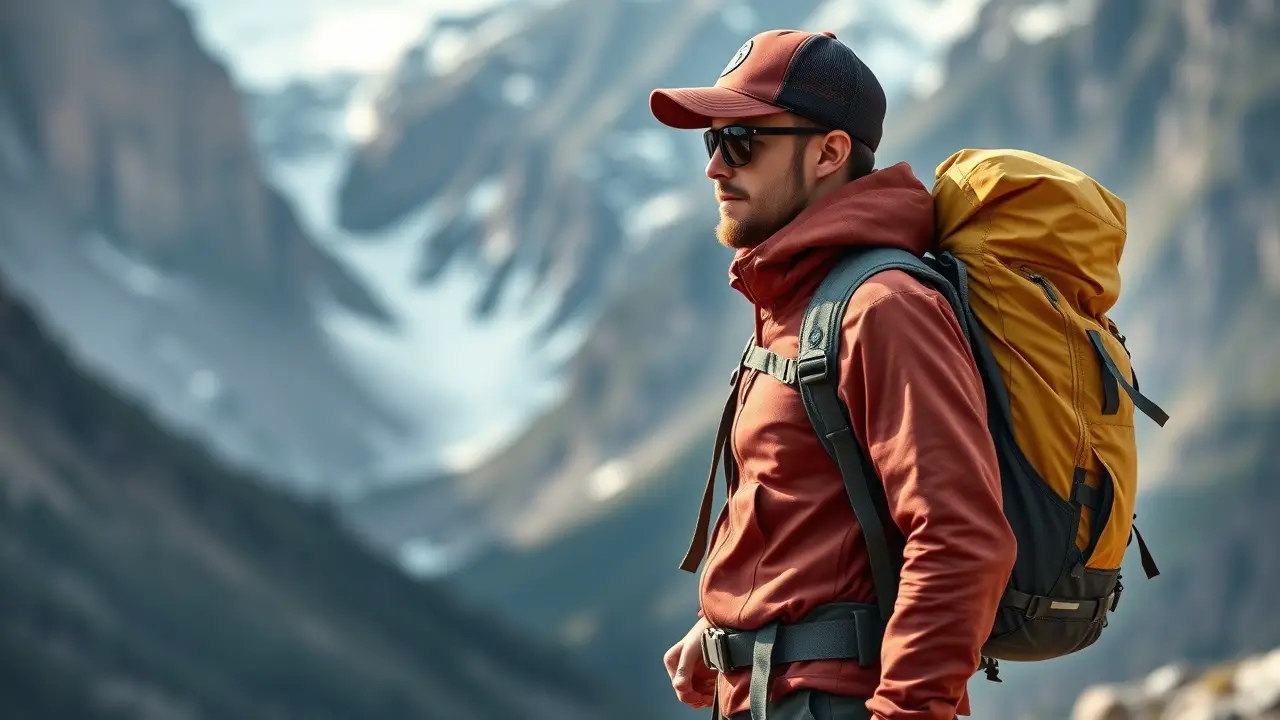
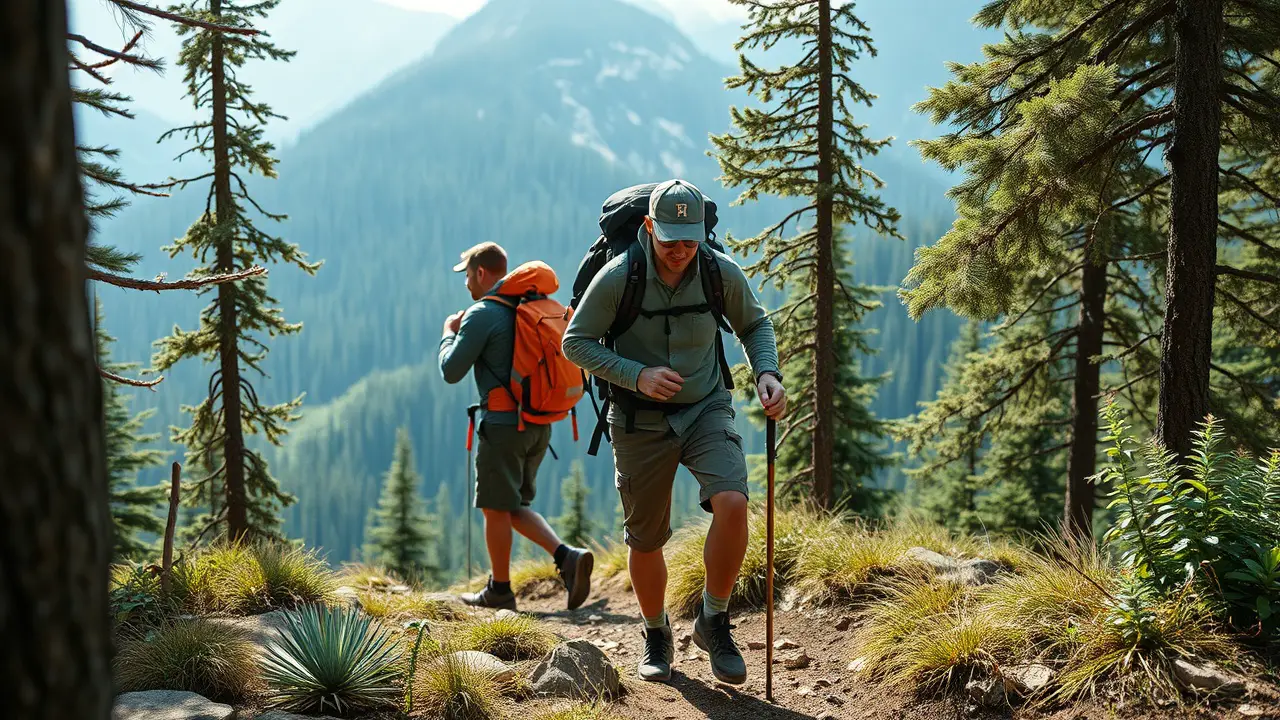
Leave a Reply